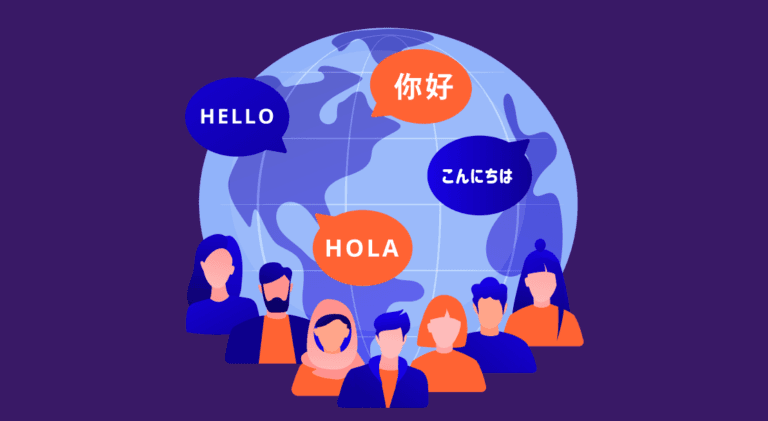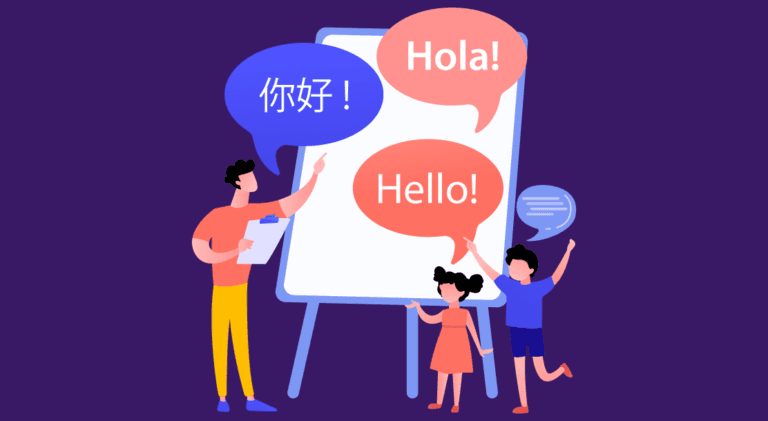
Language translation becomes crucial when you are targeting an international audience. Many companies are leveraging translation to improve their brand image and expand the business. And if those are your goals, you should adopt it too. Translating your content into a global language can give your brand the upper hand. Moreover, it is a prerequisite for communicating your message effectively.
You must translate the existing content into an international language; however, make sure you do it without losing the original meaning. For instance, Hindi and English are not similar. As the language changes, so does the meaning. This is where localization comes in (more on it ahead). Language translation is difficult; hence, it is better to opt for a professional language translation service to keep your messaging coherent.

Why Is Language Translation Important for Businesses?
When a business markets its product to the international market, it needs to fine-tune the messaging. One of the foremost rules of audience engagement is speaking in the language that they understand, both literally and figuratively. Speaking to your audience in their language can improve your brand reputation and create brand awareness.

Quality language translation can leave a long-lasting impression on your audience, increasing the engagement rate. Creativity and a sound understanding of both the source and target languages can help you tailor your message to the needs of your target audience. Now that you have learned about the importance of translation, let’s look at ways to do it right.
How Can You Do Effective Language Translation?
When you enter a global market, English is the most commonly used language. However, people respond better to brands that communicate in their local language. On that note, let’s learn some simple tricks of the trade to execute the process effectively.
1. Work with experienced translators
An online translator like Facebook or Google Translate may help you overcome language barriers, but you still need to work with an experienced language translator. They help keep the essence of your communication intact. Their experience and expertise can aid in making your content relatable and accurate. Thus, if you want to achieve relevance and accuracy in language translation, work with the right people.
Remember, translation is more than just changing words; as the words change, so does the meaning. A professional translator can aid you in accomplishing the goal seamlessly. There are many translators out there; do thorough research and select the language translator who is the best fit for your brand.
2. Conduct a thorough research
Marketing is a dynamic yet challenging space, and local and global markets are totally different. Therefore, for meticulous language translation, you must be thorough with your research. Understand the terminologies of a particular language, study their culture, and look into the kind of content your audience is fond of. It’s true that market research for language translation is not a piece of cake; however, it is still worth the effort.
3. Localize your content according to your audience

Having knowledge of the local culture and language can pave the way for success. How? Through localization. It is a process in which the content is adapted to the culture and norms of a specific country or region. Before opting for language translation, ensure that you gather all the important information. You can either hire a translation agency or a language translator to get the work done effectively. They have the required skills to localize your content. Before they proceed, discuss your target audience and objectives in detail.
4. Be rigorous while translating
Translating is one of the toughest and most complex jobs. The words that you use reflect someone’s culture; hence, be mindful! Describing emotions and brand messaging in another language can be challenging, and a good percentage of people tend to be sensitive about what they want to read and what the context should be.
You can now even get online translators, all thanks to technological advancements. However, it is always better to take the help of an expert human language translator. A human understands and interprets emotions in a way that an artificial translation tool cannot.
5. Pick the right social media channels to market
You know you are doing marketing right when you keep up with the social media game. Be it original or translated content, publishing it on social media channels is a must. However, you should be careful while picking the channel. You have to create a strategy for the same. Researching your target audience isn’t enough.
You need to reach a wider audience if you are planning to tap into the global market. And to achieve this objective, you need social media. Many social media channels allow marketers to publish in multiple languages. Following are some of the most commonly used platforms:
● YouTube
These social media platforms act as an automatic online translator for you. They can help you create a more authentic experience for your audience.
6. Proofread the translated content in the end

Proofreading is a crucial step in translation. It is necessary to ensure a smooth flow of your brand message. The first draft isn’t always incredible; it’s the same with language translation. Ask your language translator to proofread everything from scratch and make the necessary changes. This way, your communication will not be hampered.
Key Takeaways
● Language translation is important to convey the original message in another language, without losing its effectiveness.
● Check the relevancy and accuracy of your content while translating it into a different language.
● Hire skilled and professional language translators for a smooth workflow.
● Publish the translated content on different but relevant social media channels. It will help you level up your brand’s game.
● Scan through your marketing material and see which content needs to be translated. If you don’t wish to craft new campaigns, work on the existing ones.
Brands are pushing their limits by going local. They are enhancing their marketing strategies to reach the audience at a global level. Thus, language translation has become crucial over the years. Brands are no longer limiting themselves to one set of an audience; instead, they are going the extra mile by localizing their content, according to specific audiences’ languages and cultures.
To make their communication more effective, many brands have even started working with a language translator. Do you want to go global too? It’s time you start implementing the translation process in your communications.

FAQs
No. Not every person has the required skill set to translate content. Working with an inexperienced person can hamper your brand messaging. Expert language translators understand your requirements in the best possible way. They would make the translation process smooth and hassle-free. All you have to do is to recruit the right translator.
Working with experienced translators can take away a lot of burden from your shoulders. They understand your requirements in detail, which makes it easy for them to do the final translation; however, it is your job to provide them with all the requisite resources.
Tell them about your target audience, brand objective, and brand tonality. That should ease the process to a great extent. Furthermore, extensive knowledge of your needs can help them translate the content more effectively. The more accurate the content is, the higher the chances of attracting a wider audience.
There are no shortcuts to success. Following a step-by-step process can take you a long way. The translation process is a bit complex. Hence, having a reliable and robust process in place can make things easier. These steps will be difficult to follow without proper translation training. Thus, work with someone who understands the intricacies of your project. It will definitely help your business achieve its desired goals.
Usually, human brains are susceptible to complexity. They need a process to understand things easily. If a translator doesn’t follow a strict process, it will leave some loose ends. This may impact your brand and the target audience. In translation, vocabulary, grammar, and meaning are way too important.
Don’t concentrate on making your content fancy; you may lose some nuances of your messaging. Rather, try to convey your brand goals and messaging as accurately and naturally as possible. It will result in greater attention from your audience, improving their perceptions of your brand. Also, mistakes can be easily made while translating; hence, proofread all your content thoroughly.
Latest Blogs
Explore how Google’s 2025 AI search updates triggered ranking chaos. Learn actionable strategies to adapt your SEO for AI Overviews, zero-click searches, and SERP volatility. Stay ahead now.
Learn how to rank on AI search engines like ChatGPT, Perplexity, and Gemini by optimizing your content for authority, structure, and relevance. Stay ahead in AI-driven search with this strategic guide.
Explore the best healthcare SEO services for your medical practice. Improve online visibility and effectively reach more patients in need of your services.
Get your hands on the latest news!
Similar Posts

Language
5 mins read
A Complete Guide to Advertisement Translation

Language
6 mins read
20 Digital Language Translation Tools and Their Benefits

Language
6 mins read